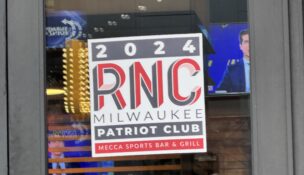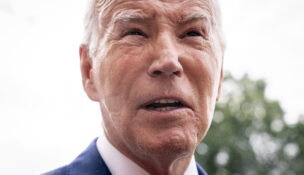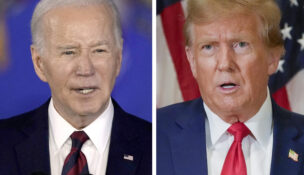Reasons why people drive recklessly in Wisconsin, possible solutions
By: Steve Schuster, [email protected]//May 24, 2023//
Reasons why people drive recklessly in Wisconsin, possible solutions
By: Steve Schuster, [email protected]//May 24, 2023//
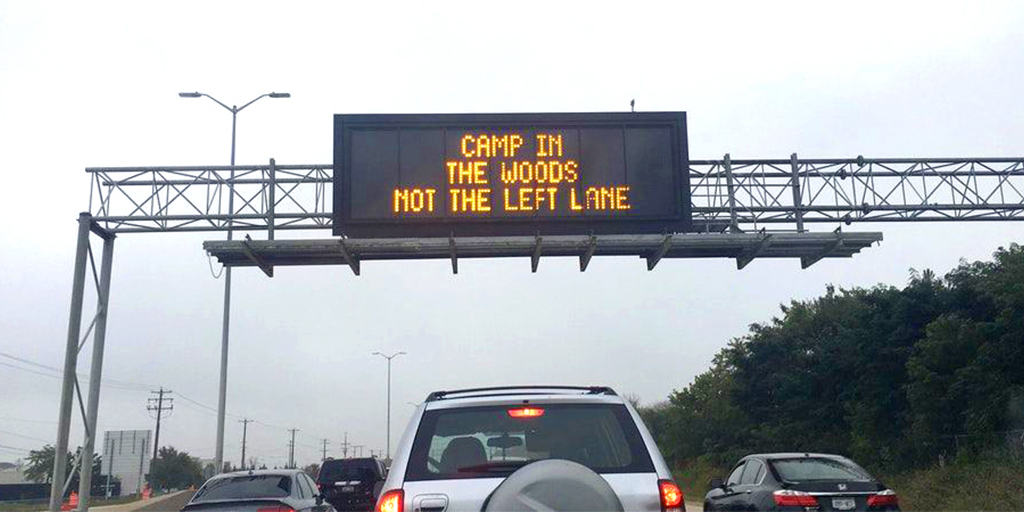
By Steve Schuster
There has been no shortage of reckless driving headlines in the Badger State in recent months, however, among questions that have been largely unaddressed — why (beyond alcohol and speed) are people driving recklessly?
On May 21, a 14-year-old girl was killed in St. Francis, Wis. by a reckless driver, the Milwaukee County Sheriff’s Office reported. A 17-year-old boy was arrested for driving recklessly while under the influence. The May 21 death was one of many recently on Wisconsin roadways, due to reckless driving.
Wisconsin’s Unique Laws and Driving Culture
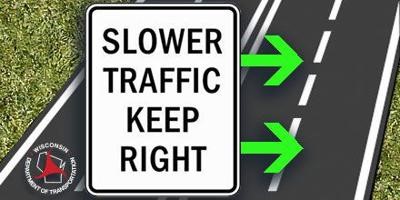
Wisconsin remains the only state in the nation where operating while intoxicated (OWI) is classified as a traffic violation in Wisconsin, rather than a criminal matter for a first offense. Wisconsin is also among states that does not generally require use of a hands-free Bluetooth device while driving a motor vehicle. Under current Wisconsin law, a handheld cell phone is prohibited only in a work zone, or if a driver has a probationary license, or instructional permit.
Unlike neighboring states such as Illinois, Wisconsin does not have a law in place that makes the left lane on an interstate a passing lane.
“We don’t call it a passing lane in Wisconsin, it’s just the left lane,” said Wisconsin State Patrol Sgt. Kyle Amlong with the Wisconsin State Patrol, during an interview with the Wisconsin Law Journal.
Illinois law stipulates that “when driving on an interstate highway … a driver may not drive in the left lane(s), except when passing another vehicle.”
Meanwhile in Wisconsin, when people are driving too slowly (well below the zoned or posted speed limit), “I’ve seen people get irritated and aggressive,” Sgt. Amlong added.
WBAY-TV reported Michigan law enforcement officials agreed and said traveling too slowly in the left lane is dangerous because drivers behind them get frustrated and attempt risky maneuvers to get around those who refuse to get out of the left lane. Michigan State Police began issuing citations to drivers going too slowly in the left lane back in 2016.
Back in Wisconsin, Sgt. Kyle Amlong said the State Patrol can issue a citation for driving too slowly in the left lane.
Issuing a citation for driving too slowly, “doesn’t happen as often as for speeding,” Sgt. Amlong added.
Meanwhile in Indiana, a State Trooper received praise for pulling over a motorist for driving too slowly in the left lane.
The Wisconsin legislature has not addressed changing current law to make the left lane a passing lane in Wisconsin, said Republican Wis. Senator André Jacque, during an interview with the Wisconsin law Journal.
“Anything is fair game looking at what surrounding states and our country as a whole is doing to combat reckless driving,” Jacque added.
Bielinski said he notices many Wisconsin motorists use the left lane as a travel lane, not a passing lane when traveling between Madison and Milwaukee on I-94.
He didn’t think changing the law would be worthwhile.
“I don’t know how you change an entire culture,” Bielinski said, noting it would take a large investment of law enforcement resources to enforce legislation making the left lane a passing lane on Wisconsin interstates.
However, laws in other states allowing police to ticket drivers for using the left lane as a travel lane has resulted in an increase in revenue for those states.
Jacque also said he is actively working on legislation inspired by a retired Green Bay Police officer.
The proposed measure would address fleeing the scene of a crime, racing on a highway, high speed issues, driving on a suspended license or operating without a license.
“Run and you’re done,” Jacque said.
Drinking and other substance use
When it comes to drinking and driving, Wisconsin has quite a history.
“On the issue of substance abuse, Wisconsin has long had a problem with impaired drivers. The State legislature has made some strides in increasing criminal penalties, but more needs to be done. Easy access to illegal drugs is also part of the problem. But in both cases, there is only so much that the criminal law can do to deter impaired drivers,” said Ed Fallone, Chair of the Milwaukee Fire and Police Commission during an interview with the Wisconsin Law Journal.
Fallone also serves as an Associate Professor at Marquette University Law School.
Sen. Chris Larson (Democrat – Milwaukee) has introduced bills for at least the past two legislative sessions that would have made a first-offense driving while under the influence require an ignition interlock device, according to Justin Bielinski, Director of Communications for Sen. Larson.
Lobbyists Influence on Wisconsin Public Safety
Bielinski said the bills did not advance because of the Tavern League’s heavy pay-to-play influence over mainly GOP lawmakers.
A Wisconsin Law Journal Investigation revealed Wednesday that the Tavern League of Wisconsin has donated more $685,585 to Wisconsin Republicans and $151,849 to Wisconsin Democrats over the past 3 decades, according to FollowTheMoney.org.
Former Republican Wisconsin Attorney Generals JB Van Hollen and Brad Schimel were among several who received thousands of dollars in donations from the Tavern League of Wisconsin. U.S. Reps. Bryan Steil and Scott Fitzgerald both received at least $10,000 in donations from the Wisconsin Tavern League, according to Follow The Money.
Losing Democrat Attorney General candidate Peggy Lautenschlager and losing Democrat U.S. Senate Candidate Russ Feingold also accepted donations from the Tavern League, the website states. Winning Democrat Rep. Katrina Shankland was also among Democrats who accepted donations from the Tavern League.

Wisconsin Tavern League’s lobbyist Scott Stenger told the Wisconsin Law Journal Wednesday that they are committed to investing in the safety of Wisconsin roads.
“We have spent our lobby efforts to expand and grow the use of our SafeRide Program and to help educate people to make a plan to have a designated driver before going out. Education and use of programs like Saferide and other ride share programs have helped to contribute to reduction in OWI convictions,” Stenger said.
Stenger was hired by Madison’s Quarles & Brady office in August 1995 as a contract lobbyist and has been involved with the Tavern League for several years, according to his website.
Bielinski also noted that the Tavern League also blocked Wisconsin from passing legislation to join most of the country in a driver’s license compact.
The Interstate Driver’s License Compact is a contract between states that enforces a DUI arrest out-of-state by agreeing to honor the DUI license suspension requirements in the state in which the DUI took place, according to the National College of DUI Defense.
“If you are convicted of a DUI in another state, that state could request a license suspension become effective in your home state,” the College’s website states.
Rural vs. Urban
According to Bielinski, he believes the reasons for reckless driving in the Badger state vary greatly depending on location (city vs. country).
In rural areas, “there are not as many cars on the road, so people feel that they have more space to speed,” he said.
In cities, like Milwaukee, Bielinski said, “people are stealing cars and taking joy rides, Bielinski added.
Speed
In addition to driving under the influence, speed is a huge cause for concern, officials said.
The Wisconsin State Patrol issued more than double the number of 100+ mph citations in 2020 compared to 2019 and the numbers remain high, Wisconsin Department of Transportation official said in an interview with the Wisconsin Law Journal Tuesday.

However, speed and alcohol are not new to Wisconsin’s roadways, so why the sudden spike over the past several months?
Covid
Some blame the Covid pandemic.
“People got used to having roads to themselves during lockdown and its hard to adjust in post pandemic world,” said Marquette Law School Professor Alex Lemann.
State officials agreed.
“Wisconsin, like many states across the country, saw risky driving behaviors like speeding and reckless driving increase as traffic flows decreased during the pandemic,” said an official with the Wisconsin Department of Transportation.
The Wisconsin State Patrol explained how COVID has played a role in reckless driving.
“We’ve noticed a dramatic increase in speeds since COVID as well. For an entire year, many people worked remotely and traffic was scarce. That led to higher speeds that we have since been battling. It’s not uncommon for me to see 100+mph speeds on a daily basis, multiple times per day,” said Sgt. Amlong.
“It seems to me people want to get from point a to point b as quickly as possible and fail to think of the consequences of their actions, or how their actions effect other people. One of my common sayings to individuals stopped for reckless driving is, “If that was your loved one in the other vehicle, would you have done what you did?” Amlong asked.
Age
Others blame age.
“It appears to me that reckless driving in Milwaukee is associated with age (teenagers and young adults) and substance abuse. Certainly, we know that car theft is a crime that skews heavily towards young offenders, who are mostly going on joy rides and then ditching the car,” said Fallone.
Solutions
As a result of the spike in reckless driving, Madison lawmakers and Gov. Tony Evers have been working in bipartisan collaboration to pass legislation to mitigate the problem. Earlier in May, Evers signed two additional reckless driving measures into law, only one day after the Milwaukee Common Council adopted a new ordinance enacted to address the fatal issue.
Accountability
The Wisconsin State Patrol has been stepping up reckless driver enforcement. The State Patrol has been conducting a series of special traffic enforcement patrols, including in Washington County on May 19. The Wisconsin State Patrol analyzes crash data from WisDOT’s Community Maps program to determine deployment areas. The goal is to step up enforcement and education in areas identified as hotspots to prevent crashes, injuries, and deaths.
Sgt. Amlong noted that Wisconsin law currently doesn’t permit the use of red-light cameras or speed cameras and Wisconsin law enforcement currently does not deploy drones for speed enforcement. However, places like Kenosha County use aircraft to catch speeders in addition to traditional methods such as Laser and radar.
Fond Du Lac County District Attorney Eric Toney said, “In Fond du Lac County we’ve seen felony fleeing from law enforcement nearly triple since 2019. It’s some of the most dangerous driving behavior you’ll see, including defendants driving the wrong way on highways and traveling well over 100 mph. It’s terrifying and incredibly dangerous driving. To better protect the public and law enforcement and to deter others we’ve implemented a mandatory prison policy in these circumstances.”
Toney also serves as the President of the Wisconsin District Attorney’s Association.
During a Milwaukee Bar Association election event in March, (now Milwaukee Municipal Court Judge) Molly Gena said she would make it a priority to ensure public safety and hold people fully accountable, including for reckless driving.
Towing
Additionally, Senate Bill 92 and Act 1. was created to reduce reckless driving in Wisconsin by giving municipalities and counties the authority to enact ordinances authorizing law enforcement to impound vehicles if the owners are cited for reckless driving, and have a prior conviction for reckless driving, and has not paid the fine.
So, just how successful of a deterrent has the towing ordinance in Milwaukee been over the past year?
Milwaukee Police tell the Wisconsin Law Journal that 268 vehicles were towed this past year In Milwaukee as a result of the new reckless driving ordinance.
“I believe that the towing policy had an impact in its first year. Based on data reported to the Fire and Police Commission by the Milwaukee Police Department, many of the individuals who had vehicles towed were repeat and persistent offenders. It is likely that this recidivist population made an outsized contribution to the rate of reckless driving incidents,” Fallone said.
“Going forward, I do not know whether the policy will continue to have as great of an impact as it did in its first year, as we reduce the proportion of repeat offenders,” Fallone added.
Fallone suggested additional ways beyond legislation to mitigate reckless driving in Milwaukee.
“Solutions might focus on denying access to vehicles for underage or unauthorized drivers. Anti-theft measures adopted by manufacturers (KIA), as well as finding ways to incentivize parents to keep a tighter control over their vehicles, would both help.” Fallone said.
According to Marquette Law School Professor Lemann, the effectiveness of a deterrent depends in part, on the “perceived likelihood of getting caught (speeding or driving under the influence). How likely will I get punished and how severely?” Lemann asked.
“How likely is it to get caught is much more important in people’s thinking of committing a crime,” Lemann added.
Torts and Tech
“I think insurance companies would have to love to have a way to combat this behavior,” said Prof. Lemann.
According to Lemann, the increased use of telematics device are becoming more popular with the auto-insurance industry. The device gets plugged into a vehicle and can detect acceleration and deceleration and uses that data to adjust monthly premiums.
However, the problem with using the technology for combating reckless driving is that “people committing egregious acts of reckless driving are probably not opting in,” Lemann said.
Lemann said the technology would have a much more widespread impact if the legislature were to mandate use of such a device after a first conviction for reckless driving.
It would make a difference, although some would object on privacy grounds. It’s similar to having a breathalyzer on a repeat drunk driving offender … there is a chance it could make a difference,” Lemann added.
Both Democrat and Republican legislatures are open to the idea.
“I’m open to the discussion,” Jacque said, noting that he “had not seen the technology or was familiar with it.”
Allstate said they support measures to combat reckless driving.
“We have a long history of supporting measures that make our roads safer, and we’ve made telematics options available to our customers to help them save money by driving safely,” said a member of the Allstate Media Team during an interview with the Wisconsin Law Journal.
Road Construction
Officials are calling for changes to Wisconsin roadways to improve safety.
“We designed Milwaukee for cars, not for people,” said Bielinski.
“Roads are designed for speed, not safety and we need to change that,” he added.
There used to be a saying there are two seasons in Wisconsin — Winter and Construction. That’s not the case anymore. Milwaukee government officials have been working around the clock and throughout the cold weather seasons on a number of Reckless Driving Mitigation Projects, including making significant changes to North Lake Drive in Milwaukee, in partnership with WisDOT.
“We are actively mitigating use of infrastructure and engineering. We need to design roadways so drivers have better cues to drive closer to the speed limit,” said Kevin Muhs, Milwaukee City Engineer during an interview with the Wisconsin Law Journal.
Noting that many crashes occur at intersections, Muhs said officials are currently working to narrow intersections to prevent crashes.
“We are installing concrete bump outs. It’s basically a small island of concrete near the parking lane to prevent people from passing on the right,” Muhs said.
“Discouraging passing on right and shorting crossing distance for pedestrians makes it safer for people,” he added.
Even if a motorist were to ignore a stop sign, “the traffic circles we are installing will force motorists to drive slower, creating safer road conditions,” Muhs noted.

“Generally, using engineering or infrastructure to slow cars and reduce reckless driving usually requires shrinking the amount of space you give to cars, including shrinking lane widths, and focusing on safety interventions at conflict points, such as at intersections. Most of the treatments we have been using or are planning to use are focused on those two priorities,” said Muhs.
According to Muhs, the city of Milwaukee has plans in the work to redesign North Lake Drive between Edgewood and Newberry. Officials plan to install planned precast concrete dividers to mitigate risk for bicyclists and pedestrians.
“We are borrowing from other places where we think it’s most effective,” Muhs said, noting that Milwaukee is only looking at colder weather cities. “We take a look at other cities in northern climates and do what we can with our Finacial resources.”
“The traffic lanes still need to be wide enough to accommodate snow removal equipment,” he added noting that Chicago and Minneapolis are among some of the best model cities for roads designed for traffic safety.
“Minneapolis has been doing a lot of interesting stuff to encourage safer streets to make it safer for pedestrians and bicycles, which makes walking and biking more attractive. We have been looking at their work very closely. We also talk to our peers in Chicago. There are a couple of projects in Milwaukee such as Lake drive reconstruction next year,” he said.
The city also has ongoing construction on Walnut Street in Milwaukee’s inner city.
“This project includes eliminating a driving length in each direction, curb extensions/bump outs to shrink the pedestrian crossing distance across Walnut, raising many crossings across the intersections with residential streets to slow drivers and increase safety as they turn off of Walnut, and adding a raised, protected bike lane in each direction.
City officials released a statement back in March stating that “The City of Milwaukee Department of Public Works, in partnership with Wisconsin Department of Transportation, is beginning its construction season with a series of major projects that will incorporate traffic calming, pedestrian/bicycle safety improvements and curb ramps built to current Americans with Disabilities Act standards.”
The release noted that a reconstruction project on North Humboldt Blvd. from E. North Avenue to E. Keefe Avenue entered its second and final year. Construction began late the week of February 27 and is anticipated to be completed in late-May. In addition to the signal poles, lighting and signage, sidewalks on both sides of the roadway will be completed and bump-outs will be added at eight intersections.
“Give ’em a brake”
James Hoffman, CEO of Hoffman construction was awarded the WisDOT project in Glendale, Wis widening I-43. According to Hoffman, speed and cell phone usage is the greatest threat to his construction crews and said, he is grateful for the assistance of local law enforcement for enforcing work-zone speed limits.
He said state officials have done a good job with advanced signage warning motorists of construction ahead, adequate traffic control devices, and clear markings.
“Off duty police officers also work our construction zones,” he noted noting that “we often ask the state for lower speed limits in work zones and most of the time that request is granted.”
According to Hoffman, the project he is working on will include safety improvements for motorists.
“There are things a designer can do to make overall freeway system safer. (This includes) wider shoulders, and areas in the median to pull over in the event of a flat tire” Hoffman said.
Funds
Gov. Evers said Wednesday that after already improving more than 5,800 miles of roads and nearly 1,600 bridges during the governor’s first term, Evers’ 2023-25 budget initiatives include providing the highest level of funding ever for general transportation aids, which go directly toward helping counties and local communities repair and maintain local roads.
Prevention
Wisconsin State Patrol says most crashes are preventable, and drivers can avoid serious injury or death by following some simple steps:
- Don’t speed. Speed increases the severity of crashes.
- Drive sober. Alcohol and drugs inhibit reaction times and make it harder for a driver to focus on safely operating a vehicle.
- Buckle up. Wearing a seat belt can greatly decrease the severity of injury in a crash. Make sure children are in the proper safety seat.
- Put the phone down. 1 in 5 crashes involves distracted driving. Turn off your phone or download an app to prevent incoming and outgoing messages, calls, and notifications while driving.
Drive courteously. Courteous driving encourages other drivers to be courteous. Aggressive driving influences others to drive aggressively.
Legal News
- Survey: Harris has enough delegates to be nominee
- Outside the RNC, small Milwaukee businesses and their regulars tried to salvage a sluggish week
- Biden called to resign immediately after the president announces he won’t seek reelection
- Biden drops out of 2024 presidential race, endorses Harris
- Local PA cops allegedly thought Trump’s would-be assassin was Secret Service
- Biden-Lead Secret Service admits agency denied past requests by Trump’s campaign for tighter security
- Class action filed against Walgreens
- Former Waukesha County Sheriff’s Office lieutenant pleads guilty to smuggling contraband
- Two dead, one injured after Ozaukee County water rescue
- RNC Final Day: Trump accepts GOP Nomination
- Wisconsin officials intervene in Planned Parenthood action
- 7th Circuit adopts modifications to Rules 31, 34, 40, 47 and 60
Case Digests
- Ineffective Assistance of Counsel; Double Jeopardy; Sentencing
- Ineffective Assistance of Counsel; Sexual Assault-Prosecutorial Misconduct
- Contract-Negligence
- Criminal Law; Juvenile Law; Discovery
- Family Law; Child Support; Property Division First paragraph(s)
- Ineffective Assistance of Counsel- Exclusion of Evidence of Witness Bias
- Postconviction Relief-Sentencing-Ineffective Assistance of Counsel
- 14th Amendment – Due Process
- Criminal-Sentencing Guidelines – Enhancement
- Bankruptcy-Tax
- Civil Rights – 14th Amendment-Jury Instructions
- Contract; Foreclosure and Property






